Trump’s First Term: A Historic Era for Manufacturing
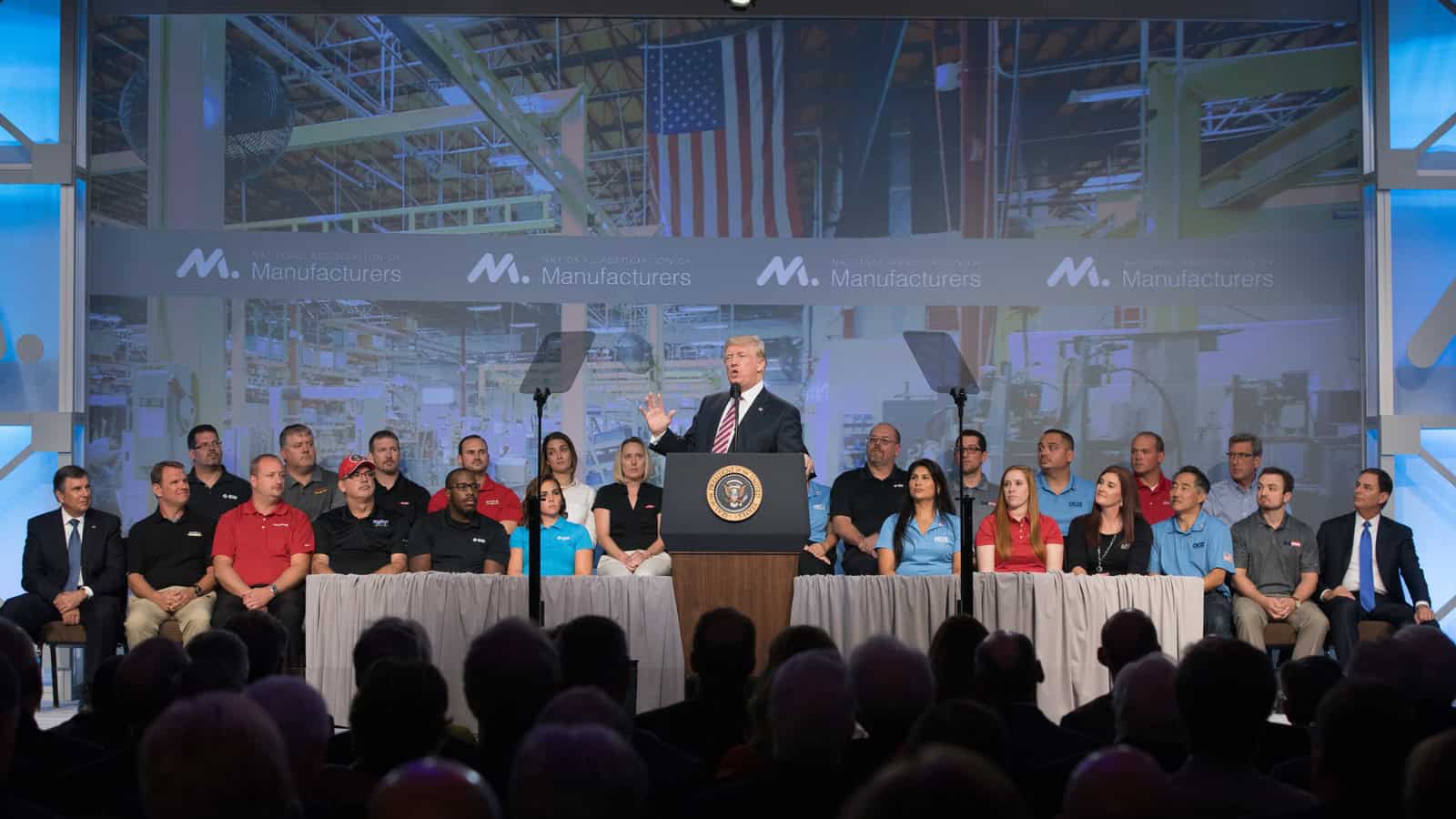
President Trump’s first term delivered significant wins for manufacturing in the United States, from tax reform to a regulatory overhaul to new trade agreements. Now, as the president-elect gears up for a second term, we look back on the transformational achievements and the NAM’s role in shaping policies that revitalized manufacturing in the U.S.
“Rocket fuel”: President Trump took the stage at the NAM’s board meeting in September 2017, where he laid out his tax reform agenda, describing it as “rocket fuel” for the U.S. economy. This was no ordinary policy effort—it was a generational initiative that would reshape industry in the United States.
- The impact: The Tax Cuts and Jobs Act delivered a 21% corporate tax rate while instituting full and immediate expensing for capital investments, improved interest deductibility and provided other critical provisions for small manufacturers and the entire industry.
- As a result, manufacturers nationwide reported record optimism, expanded operations, hired more workers, increased wages and benefits and reinvested in their communities.
Regulatory certainty: Recognizing that excessive regulations were stifling growth, the Trump White House asked then-NAM Board Chair David Farr in the first half of 2017 to compile a report from NAM members on the regulations causing them the most harm. The NAM team worked closely with administration leaders to address these pain points, compiling a list of 158 regulations for reform, with an emphasis on regulatory predictability and simplicity.
- The impact: By the close of Trump’s first term, more than 90% of the NAM’s regulatory recommendations were addressed or nearing completion. This unprecedented relief helped manufacturers focus on growth, product innovation and expansion.
Stronger deals: The Trump administration kept manufacturers and the NAM at the table, forging a trilateral deal to strengthen manufacturing’s competitive edge.
- The impact: Thanks in large part to manufacturers’ persistent advocacy work with lawmakers on Capitol Hill, the United States–Mexico–Canada Agreement was signed into law, restoring trade certainty for the North American markets that support millions of manufacturing jobs in the United States.
- While the NAM continues to pressure Mexico and Canada to live up to their commitments, the agreement strengthened businesses in the U.S. by ensuring updated trade standards, bolstering protections for intellectual property and digital trade and enhancing cooperation among North American partners.
Energy independence: Under President Trump’s administration, the NAM advanced an all-of-the-above energy strategy that included expanded domestic energy production and efficiency efforts. The NAM partnered with the Environmental Protection Agency and the Department of Energy to promote practices that both protected the environment and advanced innovation for a sustainable future.
- The impact: As former Trump EPA Administrator Andrew Wheeler pointed out recently at NAM headquarters in Washington, the rollback of restrictive energy regulations and the decision to maintain workable standards empowered manufacturers to increase domestic energy production, which reduced costs and bolstered energy independence.
- This balanced approach allowed manufacturers to meet consumer demand, strengthen supply chains and make greater contributions to America’s economy and environmental stewardship.
Safeguarding American IP: Confronting unfair trade practices with China was another priority. In 2019, the NAM worked closely with the White House to secure the “phase one” trade deal with China, which was designed to strengthen protections for American IP and help level the playing field for manufacturers in the U.S.
- The impact: The agreement established enforceable trade standards with China, aiming to protect U.S. innovations and support American jobs.
Operation Warp Speed: As the COVID-19 pandemic unfolded, manufacturers were at the forefront of the response. The NAM and its members partnered with the Trump administration to secure essential operations activity to implement Operation Warp Speed, a public–private partnership that fast-tracked the development, manufacturing and distribution of vaccines.
- The impact: Operation Warp Speed delivered lifesaving vaccines in record time, saving millions of lives, ending the global pandemic and demonstrating the unequaled capacity of American innovation and manufacturing.
Dignity of work: To address the skills gap, the Trump White House created the American Workforce Policy Advisory Board, naming NAM President and CEO Jay Timmons a member. Alongside other manufacturing leaders, and with the support of the NAM’s workforce development and education affiliate, the Manufacturing Institute, Timmons worked with the administration to elevate manufacturing careers and expand access to training. In a key event, the NAM and Ivanka Trump, who received the Alexander Hamilton Award for her leadership in championing manufacturing, launched the Creators Wanted Tour in 2020 to inspire the next generation of manufacturers and close the skills gap.
- The impact: Creators Wanted became the largest industry campaign to build excitement about modern manufacturing careers, highlighting the industry’s high-tech, well-paying jobs and reinforcing its role in supporting the American Dream. The campaign helped shift parents’ positive perception of manufacturing careers from 27% to 40% and signed up more than 1.5 million students and career mentors to learn more about manufacturing careers.
Bottom line: “President Trump’s first term reshaped what’s possible for manufacturing in the United States,” said NAM Executive Vice President Erin Streeter. “As he prepares to lead again, manufacturers have the benefit of building on a strong foundation with the president-elect as well as the purpose and pride that the industry brings out in lawmakers on both sides of the aisle.”
Manufacturing Tax Team Tours Michigan
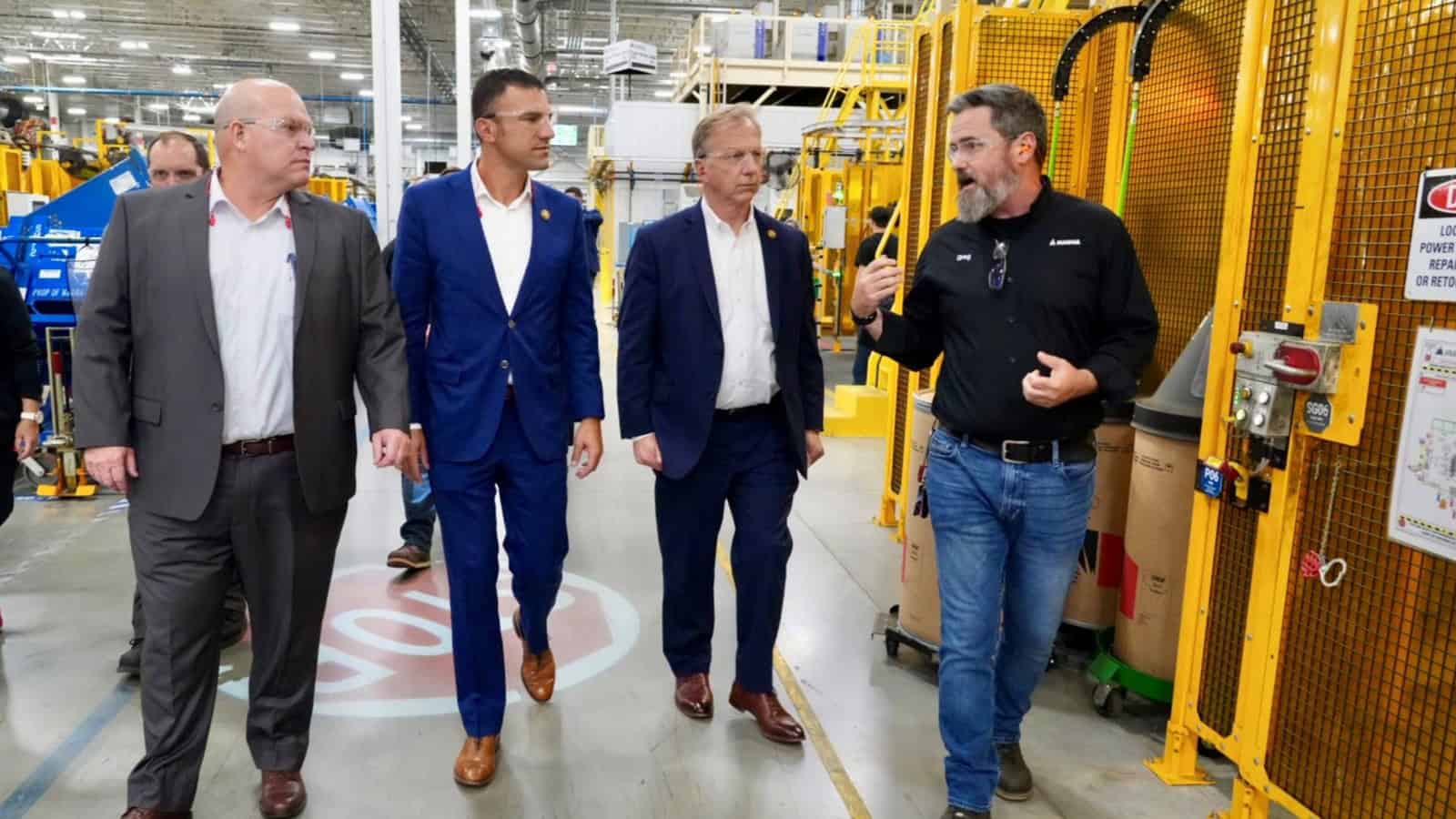
Rep. Vern Buchanan (R-FL-16), chairman of the House Ways and Means Committee’s American Manufacturing Tax Team, led a group of House GOP members on a tour of manufacturing facilities in Michigan last month. The tour highlighted the importance of extending critical tax provisions set to expire in 2025.
Reps. Mike Collins (R-GA-10), Kevin Hern (R-OK-1), Victoria Spartz (R-IN-5) and Rudy Yakym (R-IN-2) joined Rep. Buchanan for a series of discussions focused on ensuring that the tax code enables manufacturers in the U.S. to remain globally competitive.
Touring DENSO: The representatives first visited DENSO’s facility in Southfield, where executives outlined the crucial role research and development plays in the automotive sector. However, the expiration of immediate R&D expensing in 2022 has threatened to hamstring their capacity to innovate, DENSO’s leaders said.
- Buchanan emphasized the urgency of reinstating immediate R&D expensing to keep manufacturers in the U.S. competitive. “We cannot allow our manufacturers to fall behind in innovation because of uncompetitive tax policies,” he said.
- “Restoring R&D expensing will allow companies like DENSO to continue investing in their businesses, employees and local communities.”
Lunch with manufacturers: Next, the NAM hosted a luncheon roundtable for the representatives and local manufacturers, where participants discussed the need to preserve pro-growth tax policies.
- NAM Executive Vice President Erin Streeter opened the discussion by highlighting how the 2017 Tax Cuts and Jobs Act has been “rocket fuel” for the manufacturing industry. “Tax reform led to historic job creation and wage growth for manufacturers of all sizes,” Streeter said. “Congress must protect manufacturers from devastating tax increases by preserving tax reform in its entirety.”
- Several manufacturers voiced concerns about threats to key tax provisions, including the pass-through deduction and the 21% corporate tax rate.
- “If these tax policies are allowed to expire, we’ll be forced to cut back on investments that drive growth,” one local manufacturer said.
Visiting Magna International: Last, the representatives toured Magna International’s facility in St. Clair, where the group got to see the production of the company’s cutting-edge autonomous vehicle technology.
- During the tour, Magna’s leaders noted that the expiration of pro-growth tax provisions could hamper future investments in these critical technologies.
Momentum: These events followed a series of facility visits from key congressional leaders over the August congressional recess, hosted by the NAM and spotlighting the top priorities of American manufacturers.
- “These discussions are shaping the future of manufacturing right here on the shop floor,” said NAM Managing Vice President of Government Relations Stef Webb. “From R&D expensing and accelerated depreciation to the pass-through deduction and the corporate tax rate, these are the policies manufacturers need to stay competitive in the global market.”
The last word: Following the day’s events, Rep. Buchanan reaffirmed the Manufacturing Tax Team’s commitment to ensuring a competitive tax environment.
- “We must fight to preserve the tax policies that have allowed American manufacturing to thrive,” Rep. Buchanan said. “The stakes are high, and Congress must act before it’s too late.”
If you want to add your voice to the fight for tax reform, or host legislators for a facility visit, check out the NAM’s “Manufacturing Wins” campaign.
Q&A: Sen. Hassan on Immediate R&D Expensing

The NAM recently interviewed Sen. Maggie Hassan (D-NH) on the importance of reinstating immediate expensing for companies’ research-and-development expenditures. Here’s the full interview:
NAM: Sen. Hassan, Congress is facing a “Tax Armageddon” next year, as crucial provisions from 2017’s Tax Cuts and Jobs Act are set to expire. As a member of the Senate Finance Committee, what is your focus moving into next year’s debate?
Sen. Hassan: Next year, we will need to work to pass a tax cut package to support both American families and businesses. The package should build on the one that was negotiated in the Senate earlier this year, including a restoration of the full R&D tax deduction to support innovative businesses. The R&D tax deduction is an area where I have been particularly engaged in negotiations, and it is vital for our national security and economic competitiveness. We need to ensure that our tax policy fosters innovation, promotes the creation of good-paying jobs and keeps the United States at the forefront of technological advancement. We also need to prioritize a bipartisan expansion of the Child Tax Credit to support hardworking families and a bipartisan expansion of the Low-Income Housing Tax Credit to address our country’s housing shortage. I will continue to push for these critical measures throughout negotiations.
NAM: As you know, for nearly 70 years, manufacturers in the U.S. were able to fully deduct their R&D expenses in the year incurred. Beginning in 2022, however, manufacturers were forced to spread their deductions over several years, greatly harming our ability to grow and compete. What is Congress doing to restore immediate R&D expensing?
Sen. Hassan: I first introduced bipartisan legislation with Sen. Todd Young to restore the R&D deduction back in 2020, and we’ve been pushing for its passage since. The R&D tax deduction has wide bipartisan support—our measure supporting full R&D expensing passed 90–5 in the Senate in 2022. Recently, we had a bipartisan tax cut package that included the R&D tax deduction’s restoration, but unfortunately, it was blocked in the Senate, despite passing the House with an overwhelmingly bipartisan 357–70 vote. It’s disappointing and frustrating.
NAM: During your time as senator, you have seen how impactful R&D is for manufacturers to be able to compete on a global level. As we get closer to next year, what are you hearing from stakeholders on the need for pro-growth tax policy so American businesses can engage and grow around the world?
Sen. Hassan: The message I’m getting is clear—we can’t afford to fall behind in the global R&D race; it’s about American competitiveness and national security. Countries like China are offering massive incentives, including a 200% super-deduction for R&D. That puts American businesses at a real disadvantage, and I’m already hearing from business leaders across New Hampshire about how the expiration of the tax deduction is impacting their ability to plan for and make the investments that drive our economy forward.
There’s a critical national security component here too. We need to be at the forefront of designing, implementing and controlling new technologies, including those used for our national defense.
NAM: Thank you, Sen. Hassan. What else can NAM members do to stay engaged and be a resource for you going into next year?
Sen. Hassan: Your advocacy is crucial. I encourage NAM members to keep speaking up about the ways in which R&D and tax policy specifically impacts your businesses and communities, as well as the need for bipartisan compromise. Doing so is invaluable in shaping effective legislation and getting it across the finish line.
Sen. Hassan: We Need Immediate R&D Expensing
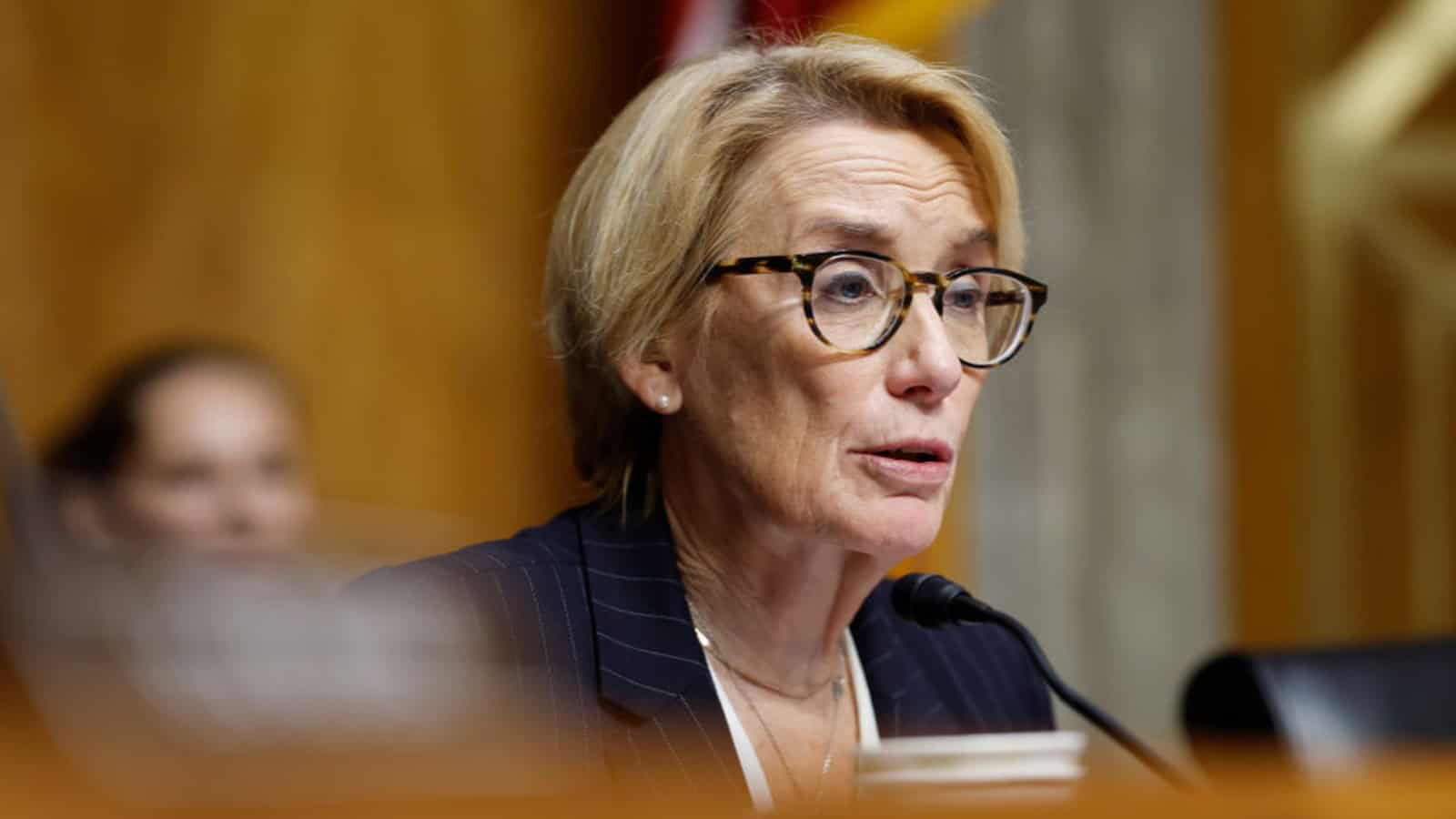
With a “Tax Armageddon” looming at the end of 2025, Sen. Maggie Hassan (D-NH) is gearing up to fight for manufacturers. Sen. Hassan, who introduced the bipartisan American Innovation and Jobs Act (S. 866) with Sen. Todd Young (R-IN) in 2020 and reintroduced it last year, understands the importance of restoring expired manufacturing-critical tax provisions.
What’s going on: One of Sen. Hassan’s top priorities for 2025 is reinstating immediate expensing for companies’ research and development costs.
- For nearly seven decades, manufacturers could fully deduct R&D spending in the year those expenses were incurred. But since immediate R&D expensing was allowed to expire in 2022, manufacturers have been required to amortize R&D expenses over a period of years instead.
- “The R&D tax deduction … is vital for our national security and economic competitiveness,” Sen. Hassan told us in a recent interview for the NAM’s “Manufacturing Wins” campaign, adding that she has “been particularly engaged in negotiations” on the topic. “We need to ensure that our tax policy fosters innovation, promotes the creation of [well]-paying jobs and keeps the United States at the forefront of technological advancement.”
Why it’s important: “The message I’m getting [from manufacturers] is clear: We can’t afford to fall behind in the global R&D race,” Sen. Hassan continued. “It’s about American competitiveness and national security. Countries like China are offering massive incentives, including a 200% super-deduction for R&D. That puts American businesses at a real disadvantage.”
What she’ll be doing: Though a bipartisan tax cut package that included a restored R&D tax deduction passed in the House earlier this year, the legislation stalled in the Senate. That’s only made Sen. Hassan vow to redouble her efforts in 2025.
- “[L]ooking ahead, I’m committed to working across the aisle to get this done because it’s crucial for our manufacturers, our economy and our national security,” she said.
What you can do: Manufacturer input and engagement are vital as Congress considers tax legislation next year, Sen. Hassan emphasized.
- “I encourage [manufacturers] to keep speaking up about the ways in which R&D and tax policy specifically impacts your businesses and communities, as well as the need for bipartisan compromise. Doing so is invaluable in shaping effective legislation and getting it across the finish line.”
Read the full interview here.
Manufacturers Weigh in on Challenges Facing Data Center Growth
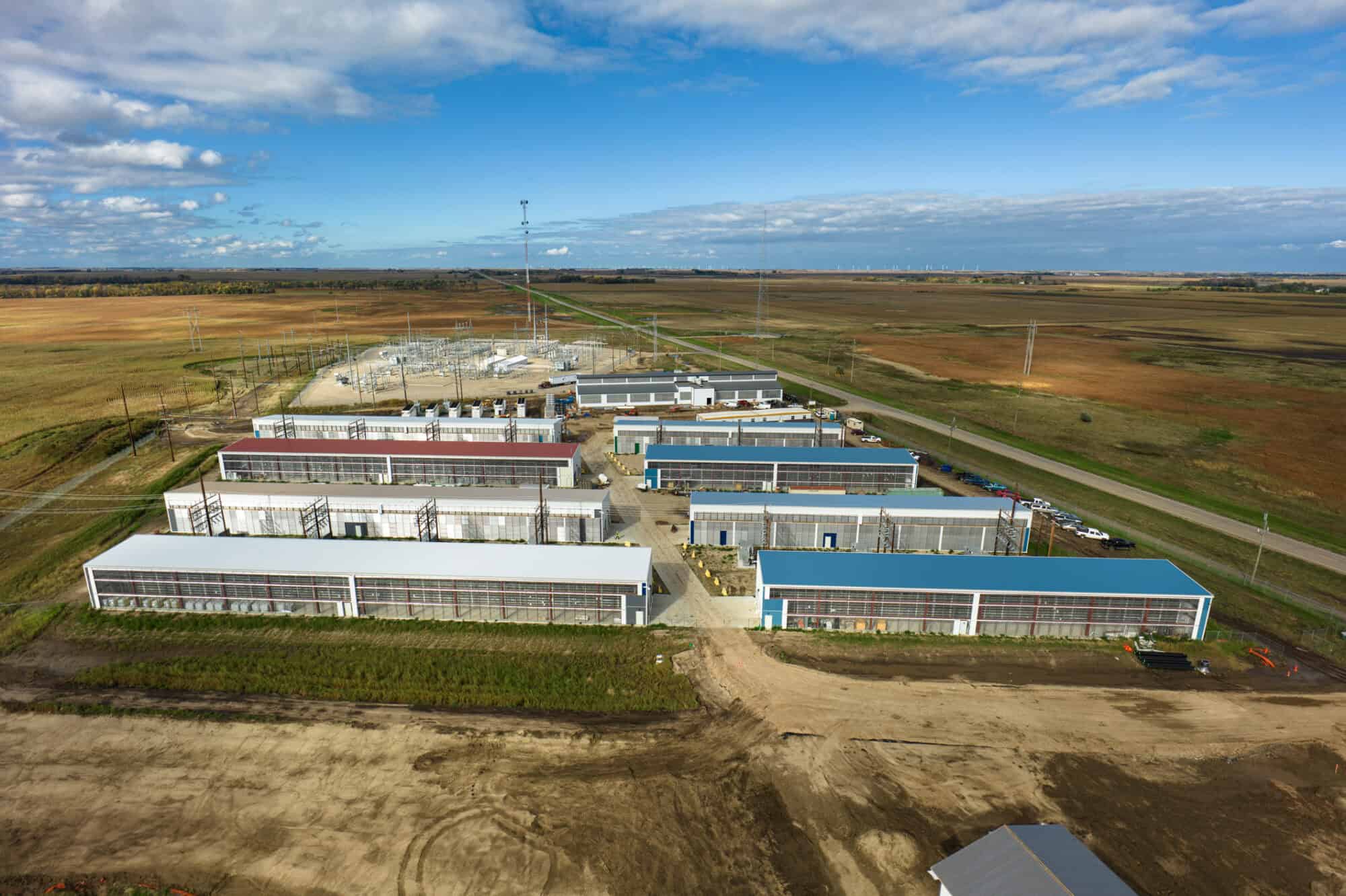
Manufacturers, and the data centers they support and use, rely on stable, affordable energy sources. Federal policy must help strengthen the U.S. electric grid and supply chains and address cybersecurity risks and workforce needs, the NAM told the Commerce Department Monday.
What’s going on: “Manufacturers use one-third of America’s energy, and as such, the growth of our nation’s energy supply is critical to manufacturers’ ability to create jobs, expand operations and grow the economy,” NAM Vice President of Domestic Policy Chris Phalen told Commerce’s National Telecommunications and Information Administration in response to a request for comment on the challenges facing data center growth.
- “In addition to growth in energy generation, manufacturers depend on a stable electric grid to ensure the continuous operation of their facilities.”
The challenge: Grid stability is at approaching an inflection point due to expected explosive growth.
- Phalen cited the 15% potential rise in power demand by the end of the decade (Wood Mackenzie) and an August 2024 Energy Department study that found “electricity generation would need to double to keep up with demand” on the grid.
Call to action: There are several steps that need to be taken to confront the challenges posed by the nationwide growth of data centers, Phalen told the agency. They include the following:
- Reforming the U.S. permitting system: “[T]he NAM strongly encourages the NTIA and all federal agencies with equities in meeting growing energy demand to align with our permitting principles,” which include “[e]xpediting judicial review, [a]ccelerating the permit process for needed energy infrastructure, including more transmission lines, pipelines and permanent carbon sequestration sites … [and] [u]nlocking access to domestic critical minerals.”
- Ensuring energy affordability: In particular, the NTIA should look at the role of natural gas “as a source of baseload power to the data center industry” and as a backup to renewable energy sources.
- Expediting licensing: The federal government should speed up the licensing process for next-generation technologies, such as small modular and advanced nuclear reactors.
- Addressing component shortages: Because “[r]obust growth in data center construction is heightening demand for related essential inputs, stretching existing supply chains … we encourage the NTIA to explore and support federal policies to increase domestic capacity of critical equipment to meet the needs of a modern grid.”
- Mitigating cybersecurity risks: NTIA should urge the Department of Homeland Security’s Cybersecurity and Infrastructure Security Agency to revise its April draft rule requiring stringent reporting standards for certain security incidents. It should ensure that the final version “fosters collaboration, rather than confusion, between cloud providers and customers and enables each to respond to cyber incidents effectively.”
- Bolstering workforce development efforts: Congress should reauthorize the Workforce Innovation and Opportunity Act, expand Pell grant eligibility to short-term training programs, give more support to industry sector partnerships and more “to reduce the skills gap” that exists in the data center and manufacturing industries.
Small Manufacturers to Congress: Restore a Pro-Growth Interest Deductibility Standard
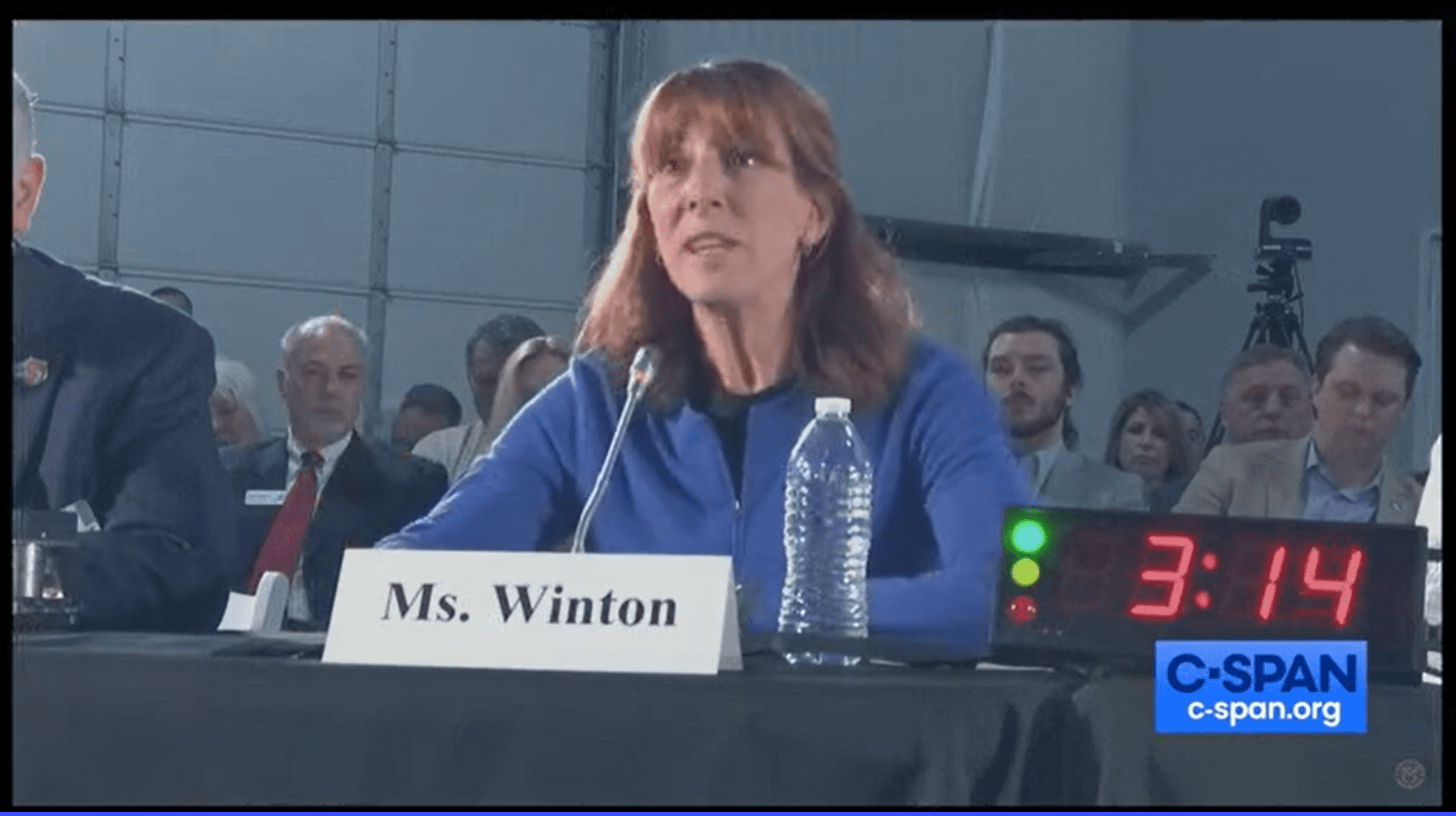
As part of the NAM’s “Manufacturing Wins” tax campaign, small and medium-sized manufacturers are urging Congress to reinstate the pro-growth interest deductibility standard implemented by the 2017 Tax Cuts and Jobs Act—which was crucial to making debt financing for capital equipment purchases more affordable for manufacturers.
What’s happening: Tax reform allowed companies to deduct the interest they pay on business loans, up to a cap of 30% of their earnings before interest, tax, depreciation and amortization (EBITDA).
- But as of 2022, companies can only deduct interest up to 30% of their earnings before interest and tax (EBIT). This stricter limit raises borrowing costs for manufacturers, making it harder for them to finance job-creating investments in equipment and machinery.
Why it matters: Ankeny, Iowa–headquartered manufacturer Accumold was able to hire the talent it needed because of tax reform’s incentives for capital investment, including the EBITDA-based business interest limitation. “Thanks to tax reform, Accumold was able to increase our capital investment and add to our teams,” said President and CEO Roger Hargens.
- “By excluding depreciation and amortization expenses from the interest deduction calculation, the EBIT standard makes debt financing more expensive—punishing manufacturers with significant investments in depreciable assets like equipment and machinery, as well as valuable intellectual property subject to amortization,” explained Sukup Manufacturing President and CEO Steve Sukup, whose company is based in Sheffield, Iowa.
Supply chain implications: The change has had far-reaching effects on supply chains across the country, hitting small manufacturers—such as Pennsylvania-based Erie Molded Packaging—hard.
- “The majority of my customers buy and sell large pieces of capital equipment that require debt financing,” President Tom Tredway said. “Their inability to deduct interest makes borrowing more expensive, impacting small manufacturers’ economic health and ability to grow. Policy changes cause ripple effects across every level of the supply chain, and small manufacturers often take the biggest hit.”
- Added Sukup: “This change has been damaging to Sukup’s supply chain, as our partners at all levels often use debt financing for investments, including purchasing our products.”
- BTE Technologies President Chuck Wetherington and NAM Executive Committee Member in Hanover, Maryland, agreed. “Many of our suppliers utilize debt financing to expand their operations and invest in growth, yet their ability to do so is limited by the more-restrictive interest deductibility standard,” he said. “Ultimately, this switch to an EBIT standard weakens the manufacturing supply chain.”
Innovation at stake: Simmons Knife & Saw in Glendale Heights, Illinois, has seen a dramatic increase in its tax bill since pro-growth tax policies began to expire in 2022, including the EBITDA-based interest limitation.
- “We sell to over 100 countries and face competition around the globe,” said President and Owner Colin Murphy. “To remain competitive, we need to continually innovate and consistently invest in new machinery and equipment.”
- He added that the company’s higher tax bill “has led to less investment in equipment, fewer jobs and less innovation.”
The bottom line: “Increasing the cost of debt financing makes it more costly for manufacturers to invest in growth and expansion,” said Sukup. “Policymakers should not impose limitations that inhibit manufacturers’ ability to finance investments.”
- Added Hargens: “I urge Congress to prioritize the future of our working families and our economy by preventing tax increases.”
Home Price Growth Slows to Lowest Rate Since 2023 Rate Peak
Home price growth is beginning to show signs of strain, recording the slowest annual gain since mortgage rates peaked in 2023. In August, the S&P CoreLogic Case-Shiller U.S. National Home Price NSA Index recorded a 4.2% annual gain, down from 4.8% in July.
The 10-City Composite saw an annual increase of 6.0% in August, a decrease from 6.8% the previous month, while the 20-City Composite rose 5.2% year-over-year, down from 5.9% in July. Among the 20 cities, New York again posted the highest annual gain at 8.1%, followed by Las Vegas at 7.3% and Chicago at 7.2%. Denver had the lowest annual increase at 0.7%.
On a month-over-month basis, the U.S. National Index decreased 0.1% before seasonal adjustment but increased 0.3% after adjustment. The 20-City and 10-City Composites saw declines of 0.3% and 0.4%, respectively, pre-adjustment, while both posted gains of 0.4% and 0.3%, respectively, post-adjustment.
Despite the slowdown, home prices reached an all-time high for the 15th consecutive month after accounting for seasonality of home purchases. Regionally, all markets continue to remain positive, but only barely.
Worker Wages and Benefits Continue to Climb as Compensation Increases
Compensation costs for civilian workers increased 0.8% in the three months ending in September. In the past year, compensation costs rose 3.9%, with wages up by the same amount and benefits up 3.7%. Manufacturing compensation costs rose 0.8% in the three months ending in September and are up 3.8% in the past 12 months, with manufacturing wages up 4.0% and benefits up 3.3%.
Private industry compensation costs increased 3.6% over the year, with wages up 3.8% and benefits up 3.3%. Inflation-adjusted compensation costs rose 1.2%. Within private industry, union workers saw a 5.8% increase in compensation costs, while nonunion workers had a 3.4% increase. State and local government workers experienced a 4.7% rise in compensation costs, with wages up 4.6% and benefits up 4.8%.
Consumer Optimism Rises for Jobs, Income, and Business in October
Consumer confidence rebounded in October to 108.7 from 99.2 in September. October’s gain was the largest since March 2021, with all five components of the index improving.
The Present Situation Index, reflecting current business and labor market conditions, increased 14.2 points to 138.0. The Expectations Index, which reflects consumers’ short-term outlook for income, business and labor market conditions, rose 6.3 points to 89.1, well above the recession signal threshold of 80. Consumers’ assessments of current business conditions turned positive, with 21.4% of consumers saying business conditions were “good.” Views of the current labor market situation also improved from September, with a higher share of consumers saying jobs were “plentiful.” Consumers also felt more optimistic about future labor market conditions for the first time since July 2023, with more consumers anticipating more jobs to be available than less. In addition, consumers felt more positive about future business conditions and future income prospects. Meanwhile, consumers’ views of their current financial situation were essentially unchanged from the prior month.
Despite slower overall price increases, inflation expectations ticked up to 5.3% in October, and expectations for higher interest rates rose. Consumers welcomed the recent reduction in interest rates but felt the rate level was still too high. Buying plans for homes and new cars continued to rise, while purchase plans for big-ticket appliances were mixed. While response were largely positive about economic conditions, concerns about a recession dropped to a new low in October.
Texas Manufacturing Production Surges as Business Sentiment Improves
In October, Texas factory activity rose notably, with the production index increasing dramatically from -3.2 to 14.6, while other indicators of manufacturing were mixed. The new orders index remained negative at -3.7, indicating demand was still slightly in decline. On the other hand, both the capacity utilization index and shipments index exhibited substantial gains and moved into positive territory, registering at 4.3 and 1.5, respectively.
Overall business conditions remained negative, although pessimism abated some. The general business activity index moved up six points but remained negative at -3.0, and the company outlook index improved slightly to -3.3. The outlook uncertainty index, which has been volatile lately, ticked down less than one point to 16.4 after surging nearly 10 points in the previous month.
Labor market indicators pointed to some employment declines and shorter workweeks in October. The employment index fell eight points to -5.1, while the hours worked index inched down three points to -5.5. About 14% of firms reported net hiring, while more than 19% noted layoffs. Moderate upward pressure on prices and wages persisted. The wages and benefits index rose five points to 23.5, roughly aligned with historical averages. The raw materials prices index ticked down to 16.3, while the finished goods prices index remained relatively unchanged at 7.4.
The outlook for future manufacturing activity remained optimistic. The future production index rose to 42.4, the highest reading in nearly three years, while the future general business activity index shot up 18 points to 29.6, also a three-year high.
